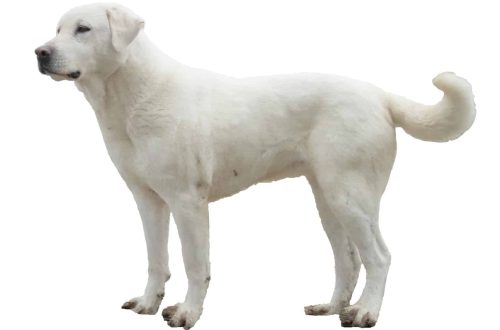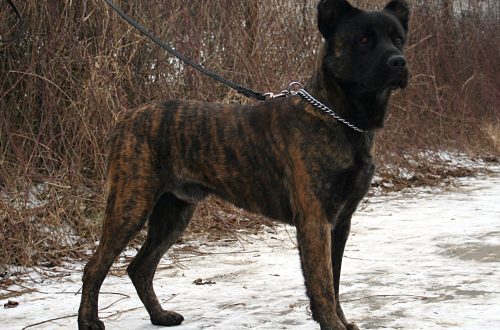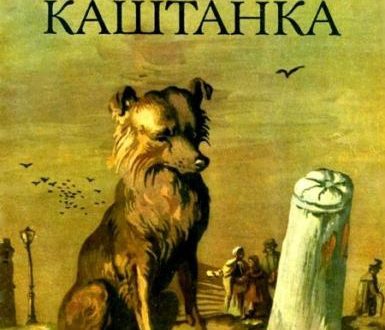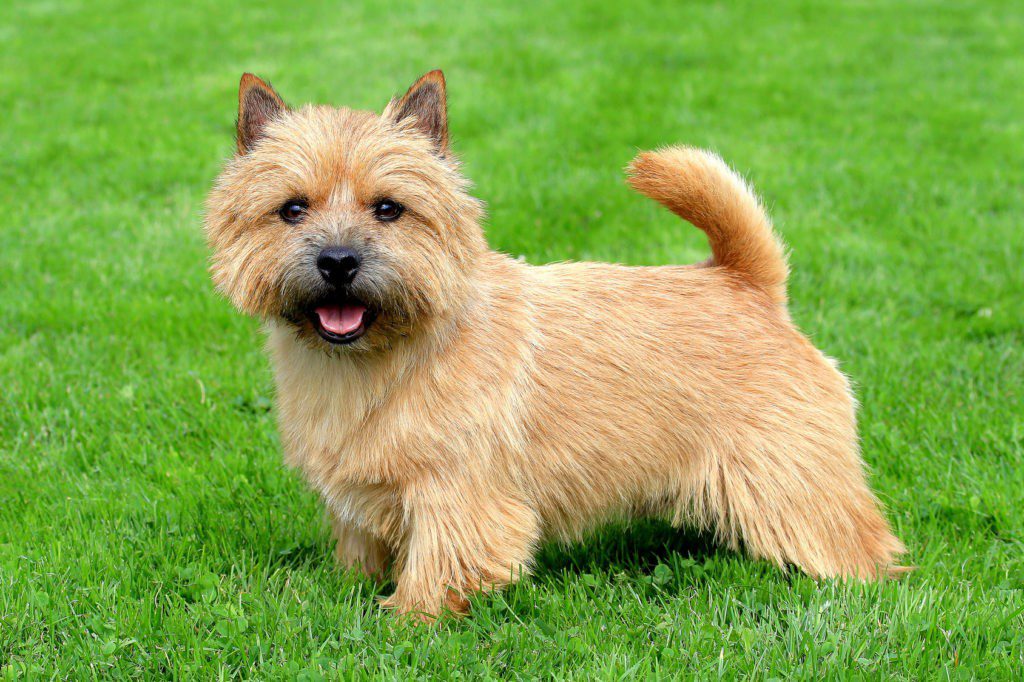
Norwich Terrier
Other names: Trumpington Terrier
The Norwich Terrier is a charming lighter in the dog world. This lively and curious baby will become the main source of positive emotions in your family, because you won’t look at him without a smile!
Contents
- Characteristics of Norwich Terrier
- Basic moments
- History of the Norwich Terrier
- Video: Norwich Terrier
- Norwich Terrier breed standard
- The nature of the Norwich Terrier
- Norwich Terrier Education and training
- Care and maintenance
- Health and disease of Norwich Terriers
- How to choose a puppy
- Norwich Terrier price
Characteristics of Norwich Terrier
| Country of origin | |
| The size | |
| Growth | |
| Weight | |
| Age | |
| FCI breed group |
Basic moments
- Norwich Terriers delight their owners with their meek disposition and amazing charm, which is why they are very popular in Europe and the USA.
- These kids love the company, and in the family circle they are extremely sociable: not a single person will escape the attention and love of the Norwich!
- Whilst away the time in a locked apartment without an owner, dogs express dissatisfaction with loud barking, and sometimes with damaged interior items.
- Despite their excellent instincts, Norwich Terriers rarely make excellent guards: the vigilance of the animal can be lulled by your favorite treat or toy.
- A representative of the breed will not tolerate the pranks of a small child, so he will not be suitable for the role of a friend for a little one.
- The ideal owner for the Norwich Terrier is a moderately strict and responsible person who will become the undisputed leader for his pet.
- Like all hunting breeds, these terriers need long walks, during which they need to be given intellectual and physical activity.
- Inexperienced dog breeders should consider another breed.
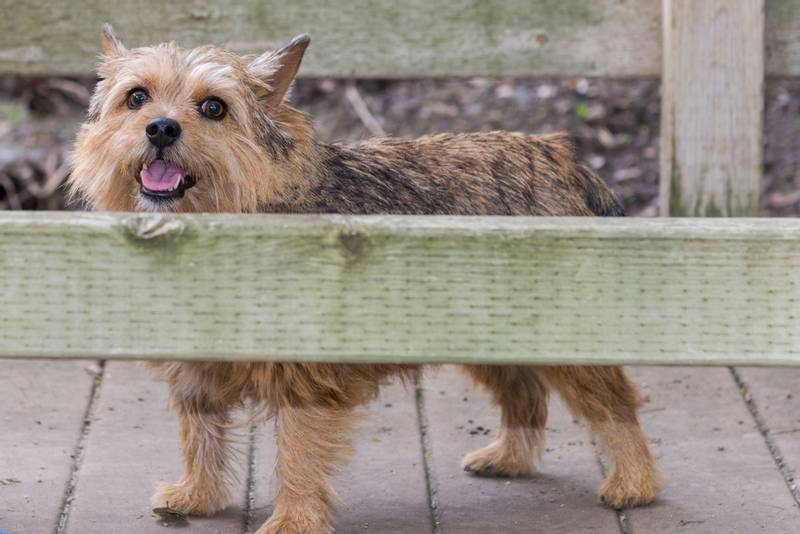
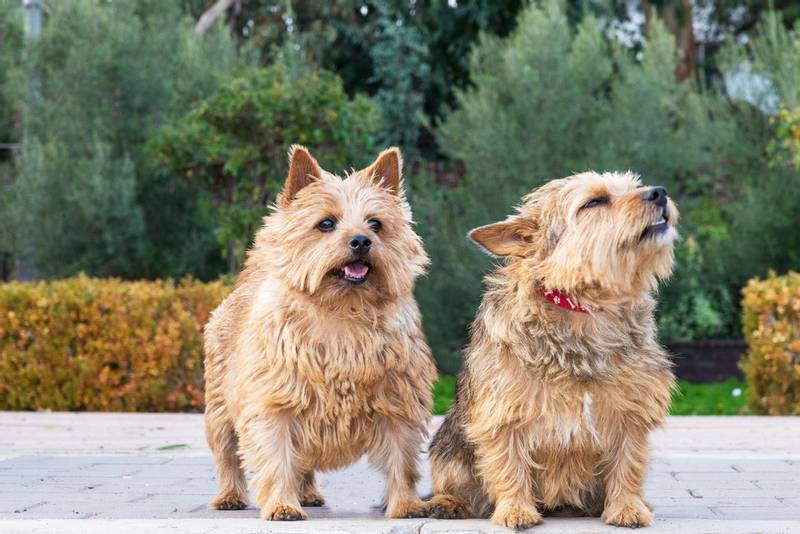
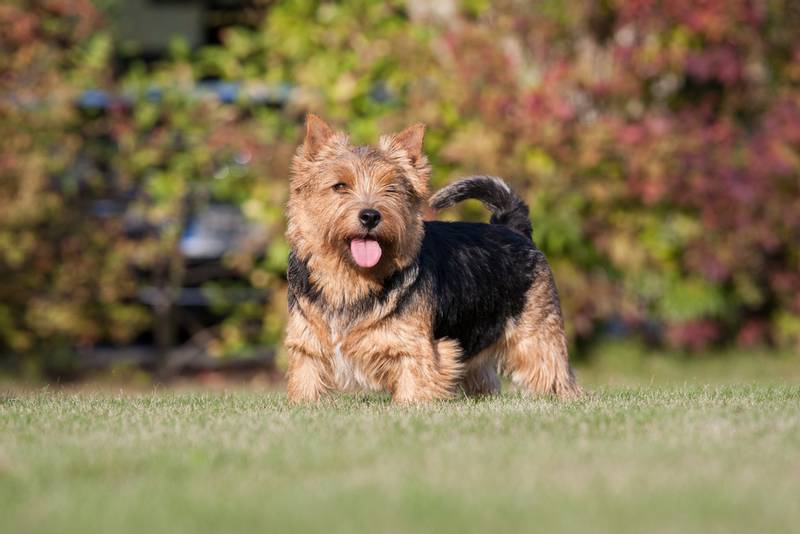
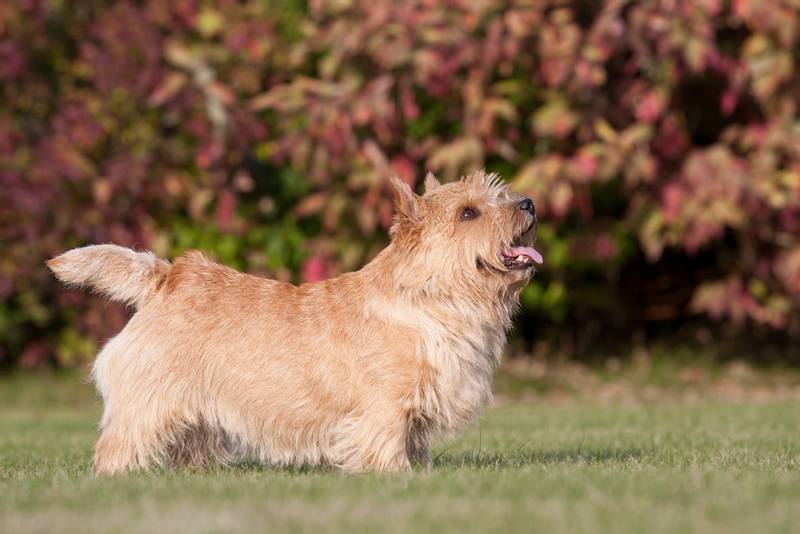
The Norwich Terrier is a stocky “gentleman” from Great Britain, with a balanced character and dizzying charisma. Under the nondescript-looking “fur coat” hides a self-confident personality, which is distinguished by a flexible mind and a rare quick wit. Like most terriers, this breed is renowned for its friendliness and sociability, making it ideal companions. It does not matter who the owner of the animal turns out to be – a stern biker or an artist with a quivering soul – the Norwich Terrier will find the key to his heart and stay there forever!
History of the Norwich Terrier
The homeland of dogs is considered to be the region of East Anglia, located north of the country’s capital. Here is the county of Norfolk, in the main city of which – Norwich – and these funny creatures were first seen. The similarity of Yorkshire terriers with “Norwich” is not accidental: the latter are descended from English terriers; those, in turn, were bred from Irish and Yorkshire terriers. Speaking about the origin of brave kids, one cannot fail to mention the Norfolk Terriers related to them. Previously, these breeds were not separated, since the only distinguishing feature of the dogs was the shape of the ears.
For a long time, terriers participated in a rich breeding program along with representatives of burrowing dog breeds. At the same time, lively crumbs acquired the first name – rags. Translated from English, the word rag means “scrap, flap.” Probably, the shaggy hair of animals became the reason for such an unpoetic name. And indeed: if the dog’s coat was not put in order for a long time, it fell off in sloppy shreds.
The next name of the breed turned out to be more presentable and glorified the animals throughout England as skilled rodent hunters. Norwich Terriers were nicknamed ratlers (from the word rat – “rat”). Despite their modest size and friendly disposition, the dogs successfully coped with the extermination of intruders who raided barns and warehouses. The British increasingly wanted to acquire a charming hunter. With this desire, the popularization of the breed began on the territory of the country, and later on throughout the world. In the 1880s these terriers have become the unofficial mascot of the University of Cambridge. The puppies made a splash among students who lined up for a fashionable pet. So the unofficial name appeared – the Cambridge terrier.
At the beginning of the 20th century, dog breeder Frank Jones resumed work on the exterior of the Norwich, crossing a representative of the breed with Cairn and Glen of Imaal Terriers. Later, dogs from Market Harborough and Cambridge joined the breeding program. Among the possible progenitors of modern Norwich Terriers are the Border Terrier . The efforts of breeders were aimed at improving and further developing the brave breed that many Englishmen loved.
Animal breeding turned into a success in 1932, when the history of the breed was replenished with three significant events at once. The Norwich Terrier entered the dog show for the first time, and its success led to the emergence of a breed club and recognition of its standard by the Kennel Club of Great Britain. Fuels were added to the fire by unceasing disputes about erect and hanging ears in representatives of what seemed to be the same breed. With the outbreak of World War II, the differences between the two camps subsided. The charming terriers were replaced by service dogs, and the little rat-catchers were on the verge of extinction.
From the middle of the 20th century, discussions flared up with renewed vigor, since the 1932 standard still considered hanging and erect ears as signs of the same breed. Breeders sought to separate outwardly similar dogs and thereby get rid of possible competition. The British Kennel Club did not consider these differences as a reason to create two independent breeds. In 1964, the conflict came to a head and the members of the club relented. Dogs with erect ears retained the name “Norwich Terriers”, but their lop-eared counterparts were renamed “Norfolk Terriers”.
English rat catchers began colonizing the United States as early as 1914, when the Philadelphia athlete Robert Strawbridge returned to his homeland, accompanied by a dog named Willum. From this dog descended the American line of Norwich Terriers. Dogs were often called Jones Terriers – after the man who is considered the founder of the breed. In 1936, thanks to dog breeders Henry Bixby and Gordon Massey, natives of England (with hanging and erect ears) were entered into the register of the American Kennel Club already under the official name. Following the example of their British colleagues, US dog breeders divided the breed into Norwich and Norfolk Terriers in 1979. Separate clubs appeared at the beginning of the 21st century.
Although dogs are no longer used as skilled rodent exterminators, they continue to conquer the world. Shaggy babies are valued for their complaisant disposition and funny appearance – this is enough to become a welcome pet and true friend for many years! The hunting qualities of animals fade into the background.
Video: Norwich Terrier
Norwich Terrier breed standard
Contrary to misconception, the Norwich Terrier does not belong to the decorative breeds of dogs, although its size is very small even in comparison with other terriers. These animals are squat and compact, but at the same time do not look awkward. The skeleton is strong, surrounded by moderately developed muscles.
Sexual dimorphism is weakly expressed: males and females barely differ in size. According to the FCI standard, the height at the withers should reach 24-26 cm, and body weight should vary between 5-5.5 kg.
Norwich Terrier Head and skull
Most often, the head seems larger than its size, and the reason for this is the “increased shaggyness” of the dog. The format is typical for most terriers: the head is wide, with smooth outlines. The skull is rounded (especially in the area of the ears), the frontal part seems to be flattened. The occipital protuberance is moderately pronounced.
Muzzle
The muzzle of the Norwich Terrier is wedge-shaped. The lengths of the muzzle and head (from the back of the head to the bottom of the foot) are in the ratio 2:3. The transition between the forehead and the back of the nose is quite sharp. The lobe is painted black. The thin lips are fully pigmented and fit snugly to the jaws. No frizziness is observed. When the mouth is closed, the teeth are not visible.
Ears
Medium size, erect. “Triangles” are located high on the top of the head with a considerable distance between them. The ears are raised and pointed forward when the dog is excited about something. In a calm state, most often slightly laid back. The ends are pointed.
Eyes
The eyes of the Norwich Terrier are relatively small, oval in shape and slit. Due to the anatomical structure, the skulls are slightly recessed, which serves as a kind of protective mechanism. Dry eyelids are tight to the eyeballs, pigmented in dark shades. The color of the iris is dark brown or black. Animals have an interested and cheerful look.
Jaws and teeth
The jaws form a correct scissor bite. The teeth are atypically large (given the dimensions of the Norwich), set firmly and strictly vertically.
Norwich Terrier Neck
The length of the neck corresponds to the size of the animal. The neck itself is quite strong, the dewlap and nape are practically not expressed.
Frame
The body of a Norwich Terrier is rectangular; has a strong, but at the same time very flexible backbone. The chest is formed by arched ribs, rather narrow, which does not prevent the use of the dog in burrow hunting. The chest is elongated, notable for good depth to the level of the elbows or below. The horizontal topline is formed by a short back, passing into the same loin and sloping croup. The belly and groin are matched.
Tail
The breed standard allows moderately docked and undocked varieties. The docked tail of the Norwich smoothly completes the topline, is notable for its medium length and high set. In motion, it rushes perpendicular to the ground. The length of an uncropped tail is not strictly regulated. From a thick base, the tail gradually tapers to the tip. Carried above the line of the back, ending it.
Forelimbs
They look less muscular than the rear ones. The developed shoulders are taken away in the direction of the shoulder blades, passing into straight forearms. The elbows are close to the chest of the Norwich Terrier. Strong pasterns are inherent in a strictly vertical set. The paws are rounded, reminiscent of a cat, thanks to well-filled pads. Directed forward, whether the dog is in motion or not. Claws, like all burrow breeds, are strong.
Hind limbs
Broad, with moderately developed muscles. Strong hips are of medium length, stifles and hocks have pronounced angles. The latter are located quite low, together with short metatarsus, provide a strong push. Paws of medium size, rounded, “look” exclusively forward. They have cat-like voluminous pads. The nails are strong, pigmented in black or dark brown.
Movement style
The movements of the Norwich Terrier are characterized by a low stroke and a powerful push due to flexible joints. The dog rearranges the hind limbs “in the wake” of the front. The topline “carries” parallel to the ground, regardless of the speed that the animal develops.
coat
Wool “Norwich” has the properties inherent in the pedigree line: it bulges in all directions, harsh to the touch, reminiscent of a thin wire. Around the neck, the outer hair lengthens, forming a “collar”. The head is covered with smooth short hair, with the exception of the area above the eyes and near the mouth, where “vegetation” is noticeable in the form of eyebrows, mustaches and beards. The undercoat is thick.
Color
Norwich Terriers have three color options:
- reddish – from fawn to rich red;
- black and tan in reddish hues;
- “grizzly” (grayish).
Norwich Terrier Possible vices
Defects include minor deviations from the standard. Mainly found:
- weak knee or hock joints;
- excessively long or curled tail;
- long or thin-boned muzzle;
- round or bulging eyes;
- underdeveloped muscles in the neck;
- white points of any size;
- barrel chest;
- “loose” lips;
- direct bite;
- hare paws;
- amble.
Disqualifying faults include:
- cowardly or aggressive behavior;
- undescended testicles (cryptorchidism);
- excessively docked tail;
- light shade of the iris;
- undershot or undershot.
The nature of the Norwich Terrier
Representatives of the breed have long earned the love of dog breeders due to their benevolent nature. These brave kids know how to stand up for themselves, but rarely enter into a “skirmish” with relatives. Norwich Terriers are sociable animals, and therefore need the presence of the owner. Of course, the dog will get used to the work schedule, but put up with the constant absence – no, thank you! The terrier will certainly burst into a long bark, so be prepared to talk with disgruntled neighbors.
The Norwichs have an amazing sense of the weather in the house and defuse the atmosphere in time with a funny trick. Dogs equally love all members of the family, but the owner is treated with special trepidation. Terrier respect is not easy to achieve for owners of a gentle nature, so the breed is suitable only for those dog breeders who can easily take a leadership position in an impromptu pack. The Norwich Terrier knows how to distinguish between the intonation and mood of the owner, so it will not create trouble for a person with extensive experience in keeping dogs.
The security qualities of the breed are still in doubt. On the one hand, small rat-catchers are very vigilant and like to bark in response to an extraneous sound. On the other hand, this kind of foresight “breaks” against the friendly disposition of the animal. The terrier is more likely to happily wag its tail than rush to attack a stranger. You should not expect a frenzied protection of property from a dog: some Norwich Terriers are ready to turn a blind eye to the machinations of a thief in response to affection or a delicious treat. Training with an experienced cynologist will correct the situation for the better, but you still cannot make an excellent guard out of this terrier. If security qualities are important to you, pay attention to other breeds: Giant Schnauzer , Doberman or Boxer .
The playful mood of the Norwich Terrier is the main reason why these dogs feel comfortable in families with children. The older the child, the better: the animal will not tolerate disrespect. The pet will not bare its fangs in response to an accidental poke, but it will not continue a fun game with a little friend.
Representatives of the breed do not mind the four-legged neighborhood. Terriers are tolerant of dogs, but the company of cats will be tolerated only if there is no reason for jealousy. The company of decorative rodents and birds is best avoided: the hunting instincts of Norwich Terriers do not obey even the strict order of the owner. Isolation and punishment will also not have the desired effect. The dog will launch a real hunt, which will end in success – but, unfortunately, not for your little friend.
Please note: Norwich Terriers tend to exaggerate their importance. This feature is fraught with regular skirmishes between males and larger relatives. If the intervention of a professional dog handler does not help, it is worth resorting to extreme measures: castration (relevant for non-working males).
Representatives of the breed are distinguished by mobility. Rare walks and lack of physical activity are a direct path to damaged furniture and other destructive entertainments of the Norwich Terrier. Keep your pet busy chasing a ball or frisbee, looking for hidden objects or overcoming an obstacle course. The Terrier will gladly throw out the accumulated energy and will not bother you with whims during the rest of the evening.
Norwich Terrier Education and training
Since Norwich Terriers are able to take the position of leader in the “pack”, it is important to determine the rules of behavior from the first day the pet appears in the house. First, establish the boundaries of the territory where the pet is allowed to be. Do you think that the bedroom or nursery is not the right place for a dog? Let the Norwich Terrier understand that a closed door is a good reason to stop at the doorstep and patiently wait for the owner.
It is important to instill good manners in your pet. During the walk, stop the slightest pursuit of cats or pigeons, do not let the terrier jump on strangers (especially children). Ideally, a pet should not pay attention to passers-by: this will help avoid accidental conflicts due to dirty paw prints on a stranger’s clothes or shoes.
It is not worth preventing the dog from communicating with relatives: early socialization is important for representatives of this breed. For the role of friends for your pet, you should choose only friendly-minded dogs. In this case, the age and sex of the animals are unimportant.
Worth knowing: cynologists recommend walking the Norwich only in the company of burrow terriers. These breeds are united by a characteristic feature – a friendly biting on the muzzle. Other dogs may perceive the “gesture” as a threat, so be prepared to stop the fight in time.
The Norwich Terrier is an above-average intelligence breed, so it is fairly easy to train. In the process of learning, it is worth being consistent and patient. The dog can be stubborn despite its desire to please the owner. Awaken in the pet interest in the new team – and the training will go like clockwork! Only motivate your terrier in positive ways, like treats or praise. Rudeness and cruelty will forever undermine the dog’s trust in your person.
The main problem of Norwich Terriers is the response to the call of the owner, if the animal is passionate about something. The nickname is the last thing you should count on: the terrier will simply ignore it. If possible, stay close to your pet or use a leash regularly, especially near busy highways.
Norwich Terriers often compete in freestyle, agility and other dog sports. In this case, the intervention of a professional trainer will be required. Regular training and rewards for successfully performed tricks will make a real champion out of a pet!
Care and maintenance
In terms of content, the Norwich Terrier is a versatile breed. The dog feels comfortable both in the apartment and in a private house, however, it is not recommended to put it on a chain or in an aviary. In the absence of the owner, the Norwich is subject to regular stress, which often results in uncontrollable behavior.
Due to excessive activity, terriers need a daily walk of at least 2-2.5 hours. Cynologists do not recommend letting the dog off the leash: under the influence of instincts and the outbreak of the excitement of hunting, the Norwich Terrier can run away and get lost.
Representatives of the breed need careful care – largely due to the double coat. It must be combed 2-3 times a week in the direction of hair growth. To do this, purchase a wooden comb with long, sparse teeth. It is undesirable to use plastic brushes and combs. They electrify the coat of the animal and make it difficult to remove dead hairs. During the seasonal molt, the Norwich Terrier is trimmed (partially or completely). Entrust your pet to a professional groomer if you plan to participate in the exhibition.
Hygiene
Frequent water procedures are highly undesirable, although it is difficult for owners of Norwich Terriers to adhere to this recommendation. Dogs do not disdain digging in the ground or actively exploring the surroundings, so the coat gets dirty regularly. Bathe the animal only as a last resort, so as not to disturb the natural oil balance of the skin. To remove surface dirt, use dry shampoo, rubbing it into the dog’s coat and combing it thoroughly.
Important: “human” hygiene products are prohibited, because they often provoke an allergic reaction. For water procedures, purchase a pet shampoo for wire-haired dog breeds with a low content of alkalis and acids. In the cold season, it is recommended to use a conditioner balm. After bathing, do not forget to dry the terrier’s coat, and then dry it with a hair dryer.
Proper grooming of the Norwich includes a weekly ear check, especially after a hunt. They need to be cleaned at least once a week. Moisten cotton wool with a special product from the pet store, alternating formulations for the prevention of otitis media and ticks. Do not penetrate the ear canal deeper than half a centimeter. Wipe the ear canal until the cotton pad is clean. Only then should the ear be wiped dry with a lint-free cloth or swab.
Do not forget to examine the eyes of the Norwich Terrier. After walking in windy weather, gently wipe them with a cotton pad dipped in warm boiled water. With purulent discharge or profuse lacrimation, it is worth contacting a veterinary clinic – self-medication is strictly prohibited. Buy eye drops only on the recommendation of a specialist.
The oral cavity is the weak point of most representatives of the breed. Since the Norwich Terrier’s teeth sit more tightly in the gums than usual, the dog needs weekly preventive cleaning. To remove soft plaque, use zoopaste (you can stop at options with flavorings). Apply the product to the toothbrush and remove food particles with a sweeping motion. Pet stores sell smaller finger tips that make the procedure easier.
FYI: Your pet’s bad breath is most often indicative of tartar formation. To remove it, use the services of a veterinarian.
The claws of the Norwich Terrier rarely need the attention of the owner, but it is still worth getting a special nail cutter. If the “manicure” of the dog does not have time to wear down on a hard surface, cut it off as it grows. The main thing is not to touch the “living” part of the claw, where the blood vessels pass. Use a nail file to smooth out sharp edges and burrs. Choose options with the lowest grit value: they grind claws better.
Feeding
In the matter of feeding, Norwich Terriers are very loyal and rarely suffer from food allergies. Both industrial feed and natural menu are acceptable. The combined diet often causes digestive problems, so it is highly undesirable.
When choosing a Norwich food, opt for super premium or holistic food with a high content of minerals and vitamins. Dry granules will slow down the formation of soft plaque on the teeth. Wet food is best for puppies, pregnant or lactating bitches, and older dogs.
The basis of the natural diet is meat – at least 60% of the total amount of food. Raw or boiled beef with little fat is best. Cartilage and tendons are acceptable. Meat can be combined with boneless sea boiled fish. The diet is recommended to be diluted with offal, best of all – raw heart and boiled beef liver. From cereals, give preference to buckwheat or rice, supplementing it with pureed or finely chopped raw vegetables, sometimes fruits. Daily consumption of vegetable oil will improve the condition of the skin, coat and nails of the Norwich Terrier. Serving should not be more than 1 tbsp. l.
It is forbidden to include in the natural diet:
- fatty meat (lamb or pork);
- carbohydrate-containing products;
- river fish (in any form);
- wheat flour products;
- raw chicken meat;
- berries with seeds;
- food with spices;
- legumes;
- tubular bones;
- whole milk;
- sweets.
The dog’s bowl must be filled daily with fresh water – bottled or running, insisting it for about 6-8 hours. Boiled water can provoke urolithiasis.
Health and disease of Norwich Terriers
Representatives of the breed are distinguished by good health and resistance to colds. Proper housing conditions and a balanced diet will turn your Norwich Terrier into a small copy of the Terminator! Despite the excellent immunity of the dog, certain ailments are more common than others. These include epilepsy and various pathologies of the respiratory system. Often, Norwich Terriers suffer from brachycephalic syndrome, when a hypertrophied soft palate prevents free breathing.
Remember: routine vaccination is the key to your pet’s longevity! The first vaccination is done at 2 months of age, followed by revaccination after 3 weeks. In six months, Norwich is vaccinated against rabies, not forgetting the complex vaccine against parainfluenza, plague, adenovirus and parvovirus. The latter implies revaccination once a year.
How to choose a puppy
You can buy a healthy baby with good heredity only in an official nursery. Ask the breeder about his successful experience in breeding Norwich Terriers, the conditions of the dogs, their titles and awards (if this is important). It is quite difficult to determine “by eye” whether a puppy meets the breed standard, so it is worth using the services of an expert. It will protect you from acquiring a culled Norwich Terrier who will not be able to participate in exhibitions.
Before meeting with puppies, it is worth getting to know their parents. A few minutes of communication is enough for a superficial overview of the shortcomings of adult dogs. If a bitch and a male show cowardice or even aggression, growl warningly and do not make contact, refuse to purchase babies from these producers. It will be extremely difficult to raise docile pets from their puppies.
Norwich Terriers are put up for sale at 7-12 weeks, when they no longer need maternal care and respond adequately to the presence of other living creatures. Among all the kids, choose the most active and strong, with excellent appetite and a desire to explore the world around them. The coat of a healthy puppy should be shiny, the nose should be moist, and the eyes and ears should be clean. At the age of 2-3 months, the general proportions of the body, the set of the tail and ears, the color and structure of the coat are already noticeable in the Norwich.
When choosing a pet, be guided by the gender of the animal. Bitches can boast of a more good-natured and calm character, unlike wayward and naughty males.
When buying a Norwich Terrier, it is important to get the accompanying documentation in your hands: a veterinary passport and medical certificates indicating deworming and vaccination. Owners of show class dogs will need a breeding certificate, which indicates the pedigree of the animal.
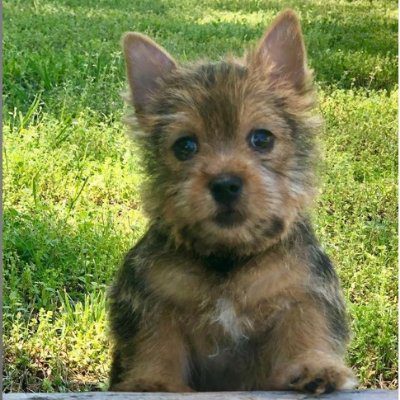

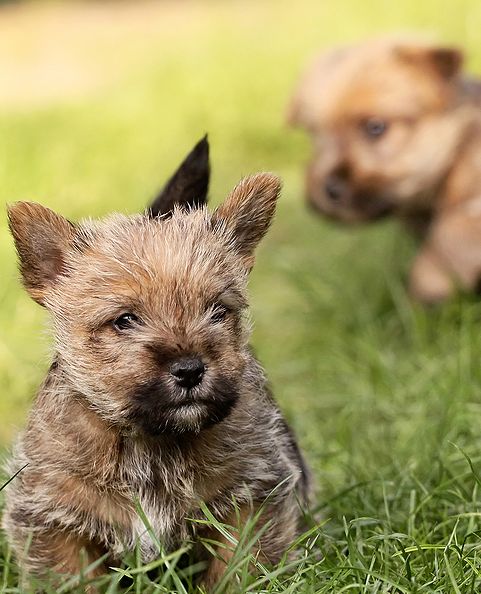

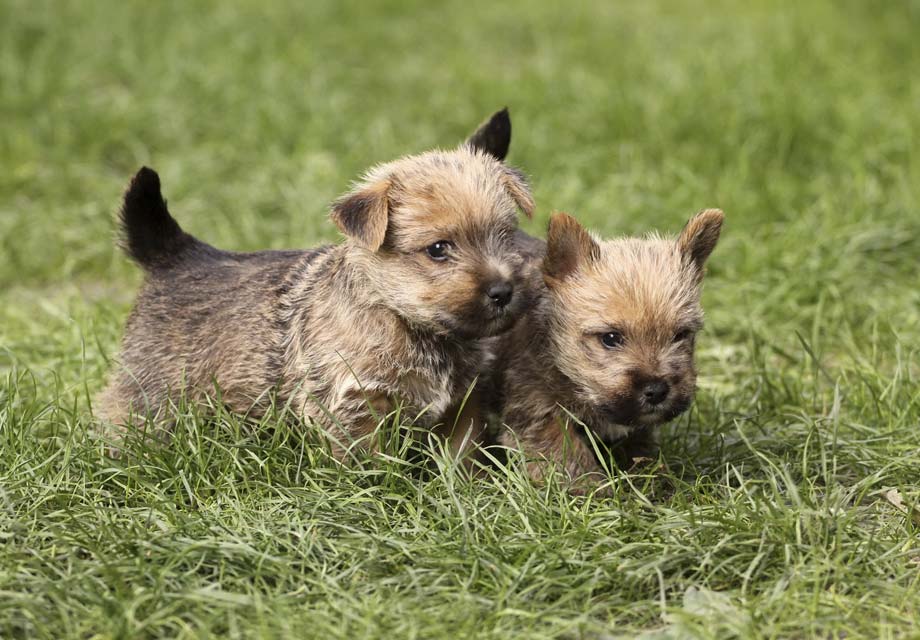

Norwich Terrier price
The cost of a pet is determined by its age and gender. Juveniles are more expensive than adult dogs, and males are often cheaper than bitches. Breeders are slightly inferior in price if there are inconsistencies in the appearance of the Norwich Terrier to the breed standard. On average, the cost of a brave rat catcher reaches 600 – 900$ (depending on the characteristics of the animal). People from bird markets and pet stores are much cheaper, but at the same time there is a great risk of acquiring a watchdog of an unknown breed. In the case of the Norwich Terrier, this is unacceptable: every dog breeder should get to know the remarkable charm of the brave little one!





